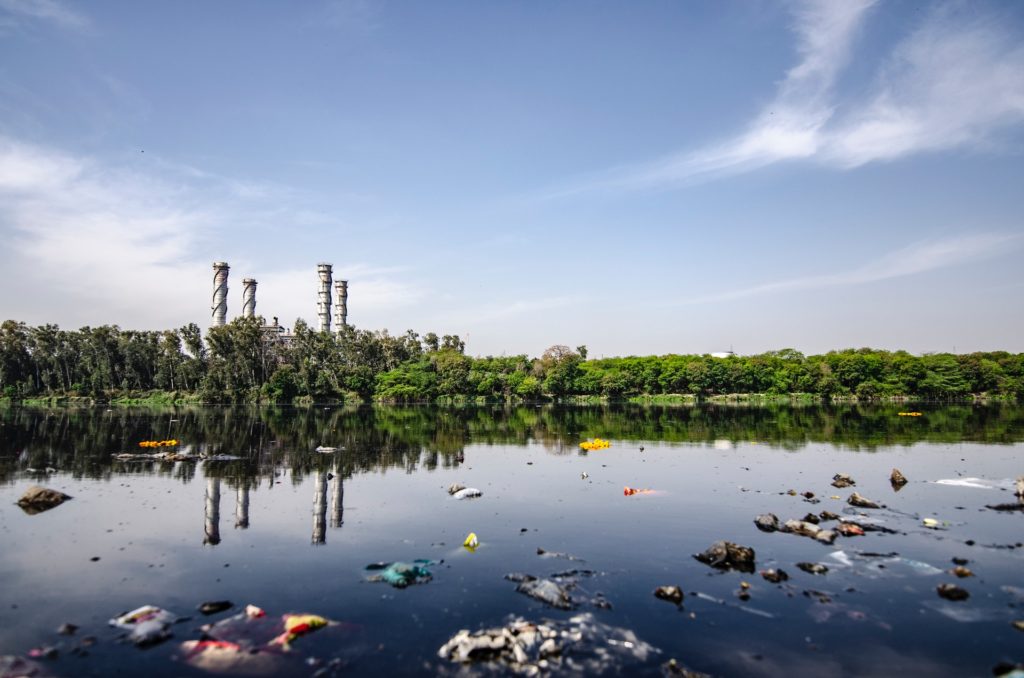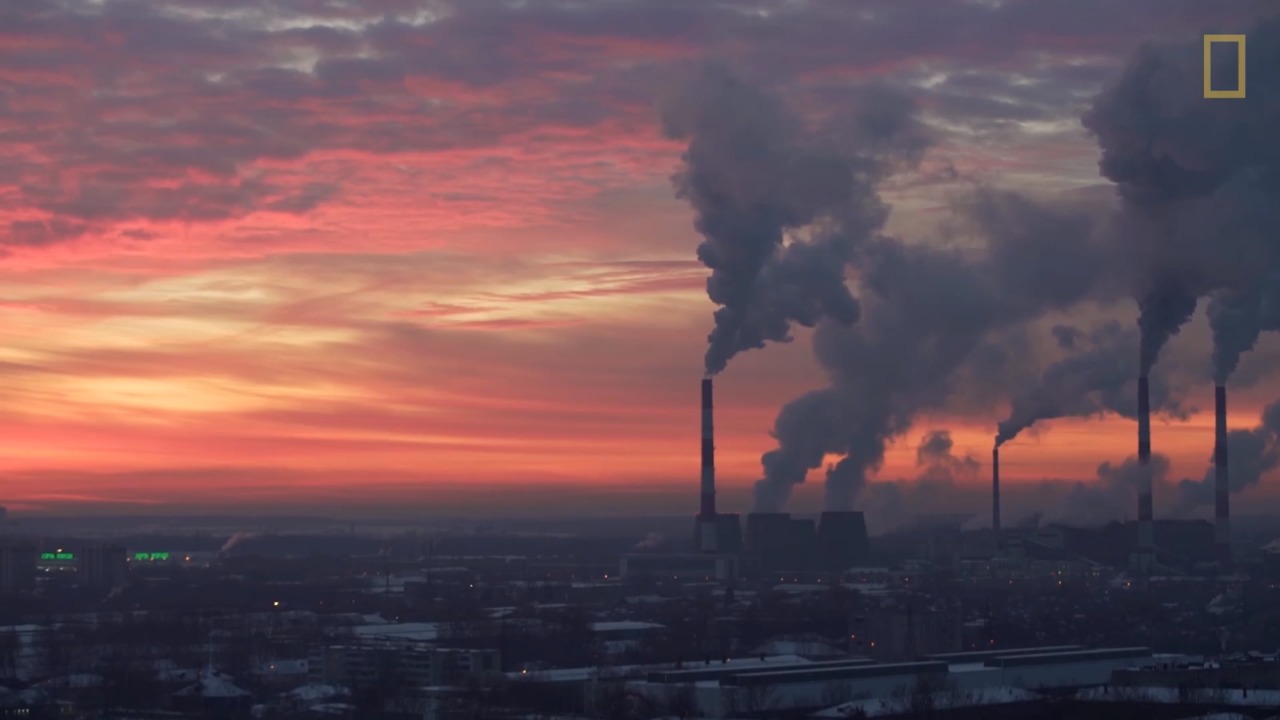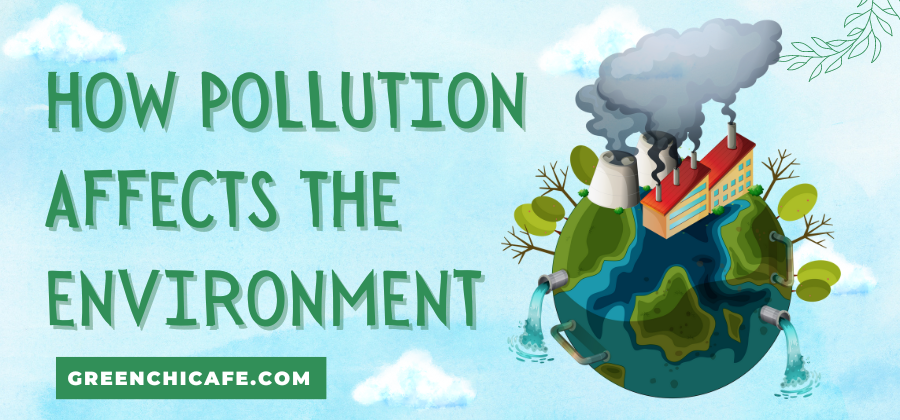Pollution harms humans, animals, and ecosystems.
Air pollution, water pollution, soil contamination, and noise pollution all affect the environment in detrimental ways.
This article explores the impacts of pollution and why it matters.
How Pollution Affects the Environment?

Pollution has an overwhelmingly negative effect on the environment.
It degrades air, water, and soil quality while harming humans, wildlife, and ecosystems.
Pollution is a key contributor to environmental issues like biodiversity loss, habitat destruction, and climate change.
However, with proper management and sustainable practices, pollution can be significantly reduced.
Key Points
- Air pollution leads to acid rain, smog, and climate change exacerbation.
- Water pollution spreads diseases, suffocates aquatic life, and compromises drinking water.
- Soil pollution reduces crop yields and allows toxins to accumulate through the food chain.
How does air pollution impact the environment?
Air pollution refers to any hazardous chemicals or particulate matter in the atmosphere.
It contributes to respiratory diseases in humans and animals.
Air pollution also hurts plants and ecosystems.
It reduces visibility and blocks sunlight from reaching the Earth.
Key pollutants in our air include:
- Carbon dioxide from burning fossil fuels
- Sulfur dioxide and nitrous oxides from coal power plants
- Methane from agriculture and landfills
- Volatile organic compounds from paints and household products
- Particulate matter from construction sites and unpaved roads
These air pollutants cause acid rain, deplete the ozone layer, and worsen climate change.
Air pollution contributes to the formation of smog.
It triggers asthma attacks and cardiovascular issues.
Air pollutants enter the bloodstream and spread throughout the body, increasing the risk of cancer.
In terms of environmental effects, air pollution harms trees, lakes, and soil.
It contributes to eutrophication, which is the excessive buildup of nutrients in water bodies.
This leads to algal blooms and dead zones in oceans.
Air pollution also causes corrosion, degrading buildings and infrastructure over time.
What are the consequences of water pollution?
Water pollution degrades surface waters like rivers, streams, lakes, and oceans.
It makes water unsafe for wildlife, ecosystems, and human consumption.
Key pollutants that contaminate water include:
- Sewage and wastewater
- Pesticides, fertilizers, and livestock waste from agricultural runoff
- Toxic metals like lead and mercury
- Plastics and microplastics
- Oil spills and chemical discharges
- Acid rain deposition
These pollutants reduce dissolved oxygen levels in water bodies via a process called eutrophication.
This suffocates fish and aquatic organisms.
Sewage spreads diseases through water contamination.
Toxic pollutants bioaccumulate up the food chain, increasing in concentration and causing reproductive issues in top predators.
Oil spills are especially damaging, coating the feathers and fur of birds and mammals.
This leads to hypothermia and the inability to feed.
Plastics and microplastics choke and entangle marine wildlife.
Globally, around 8 million tons of plastic enter the oceans each year.
Groundwater resources are also at risk of pollution.
Contaminants from industry and agriculture can infiltrate water tables.
This compromises drinking water safety.
How does soil pollution harm the planet?
Soil pollution refers to the contamination of land resources that reduces soil quality.
Key pollutants that degrade soil health include:
- Pesticides, insecticides, and fertilizers
- Toxic metals like cadmium, lead, and mercury
- Industrial wastes and petroleum hydrocarbons
- Electronic waste containing harmful chemicals
- Acid rain containing sulfuric and nitric acid
Pollutants alter soil chemistry and microbial ecosystems.
This affects plant growth and crop yields.
Toxic substances accumulate in the soil, leading to issues with the quality of food grown.
Soil pollution causes nutritional deficiencies in crops.
It also leads to diseases like cancer through bioaccumulation in the food chain.
Contaminated soils threaten groundwater quality.
Toxins can leach into underlying aquifers, spreading pollution.
Soil pollution also triggers erosion and land degradation.
It contributes to desertification, destroying animal habitats and reducing biodiversity.
Remediation of polluted soil is extremely challenging.
Preventing soil contamination is crucial.
What is the link between pollution and climate change?

Pollution and climate change are closely intertwined.
Many pollutants directly contribute to global warming and ozone depletion.
Examples include:
- Carbon dioxide and methane enhance the greenhouse effect
- Chlorofluorocarbons (CFCs) destroying the ozone layer
- Black carbon darkening ice and snow, reducing Earth’s albedo
Conversely, climate change increases certain types of pollution:
- Warming temperatures exacerbate smog and ground-level ozone
- Wildfires sparked by heat waves and drought release immense pollution
- Melting ice caps mobilize legacy contaminants like PCBs
Climate change also alters air and ocean circulation patterns.
This spreads pollutants to pristine regions like the Arctic.
Rising seas flood toxic waste sites and landfills, further spreading pollution.
Pollution control and climate change mitigation must happen in tandem.
Reducing fossil fuel reliance addresses both CO2 emissions and air pollutants.
Curbing deforestation protects carbon sinks while minimizing habitat destruction.
The future health of humans and ecosystems hinges on addressing pollution and climate risks holistically.
How does noise pollution impact animals and ecosystems?
Noise pollution refers to excessive ambient sounds that disrupt the natural environment.
Key sources include:
- Transportation networks like highways, railways, and airports
- Industrial machinery and construction equipment
- Resource extraction activities like fracking and mining
- Recreational vehicles and screaming devices
Prolonged exposure to noise pollution stresses animals.
It impairs reproduction and predator-prey dynamics.
Noise causes behavioral and physiological changes in wildlife.
It leads animals to abandon nesting areas and habitat ranges.
High noise levels damage hearing and disrupt sleep.
Birds and underwater mammals are especially vulnerable.
Noise pollution hinders migration patterns and parenting behavior in birds.
Sonar equipment causes beachings and disorients marine mammals.
Amphibians have trouble hearing mating cues. Insects struggle with navigation and locating food.
Overall, noise pollution degrades habitat quality and threatens biodiversity.
Minimizing ambient sound levels is crucial for ecosystem health.
How does plastic pollution affect the environment?

Plastic pollution severely harms ecosystems on land and in water bodies.
Each year approximately 8 million tons of plastic waste enter the oceans.
It comes from both land-based and marine sources.
Plastic debris accumulates in gyres and coastal areas, smothering habitats and entangling hundreds of marine species.
When marine life consumes plastic, it obstructs their digestive tracts and releases toxic chemicals into their tissues.
Plastics also act as sponges for other pollutants like DDT and PCBs.
These are ingested by animals and magnified up the food chain.
On land, plastic litter is extremely durable and slow to decompose.
It leaches dangerous additives and pollutants into soils.
This includes endocrine disruptors like BPA, which are toxic even at very low doses.
Plastic also enters terrestrial food chains when animals mistake it for food.
Overall, plastic pollution threatens biodiversity, human health, and the integrity of ecosystems worldwide.
Preventing plastic waste is crucial.
What environment is most affected by plastic pollution?
Marine ecosystems are the most affected by plastic pollution globally.
All the world’s oceans contain plastics, but coastal areas and gyres accumulate the most waste.
The Great Pacific Garbage Patch is an enormous vortex of plastic litter stagnated by currents.
Plastic is also pervasive in ocean floor sediments, Arctic sea ice, and areas with high commercial fishing activity.
Coastal habitats like mangroves, salt marshes, and coral reefs are hotspots for plastic accumulation and damage.
On land, areas without proper waste disposal and recycling facilities are most vulnerable.
Countries with high plastic usage but insufficient infrastructure suffer the greatest plastic pollution.
Low-income countries cannot often manage plastic waste.
This leads to ubiquitous littering and uncontained landfill leachate.
Agricultural areas are also affected since plastic mulching is common but rarely recycled.
While all environments suffer, human factors like waste management contribute to the worst plastic pollution hotspots worldwide.
How does air pollution affect us?
Air pollution has profound effects on human health, especially in urban areas.
Pollutants like ozone, nitrogen oxides, sulfur dioxide, and particulate matter contribute to 1 in 9 deaths worldwide.
They increase the incidence of strokes, heart attacks, asthma attacks, and lung cancer.
Pollutants cause inflammation and oxidative stress, which are linked to diabetes, Alzheimer’s, and fertility issues.
Mothers exposed to high pollution levels are more likely to birth underweight or premature infants.
Children experience stunted lung growth and cognitive impairment.
Adults suffer reduced lung function, headaches, fatigue, and cardiovascular problems from polluted air.
Vulnerable groups like children, seniors, and those with respiratory conditions are at the greatest risk.
What environment is most affected by air pollution?
Air pollution affects every environment, but heavily urbanized areas suffer the most.
Industrialized regions bear the brunt of pollution from power generation, dense traffic, and manufacturing.
Developing countries like India and China see extremely high pollution levels in cities.
In China alone, air pollution contributes to 1.6 million deaths annually.
Air quality monitoring stations in major metros frequently report hazardous readings.
Rural areas downwind of power plants also experience heavy pollution from smokestack plumes.
Ecosystems in industrial areas often feature damaged forests and acidified lakes.
Lastly, the Arctic is heavily affected by the transport of black carbon and toxic contaminants from lower latitudes.
Why is reducing pollution so important?
Pollution poses tremendous risks to human and environmental health.
It threatens water security, food safety, livelihoods, and quality of life.
Pollution control is vital for protecting vulnerable populations and limiting ecological damage.
Curbing pollution saves millions of lives lost each year to contaminated air and water.
It preserves ecosystem services worth trillions of dollars.
Pollution prevention safeguards ecological resources for future generations.
Tackling pollution requires collective action and political will.
But the benefits far outweigh the costs.
With smart policies and sustainable practices, society can minimize pollution risks.
The time is now to take decisive action for the good of humanity and life on Earth.
Reducing pollution is one of the most important things we can do as environmental stewards.
Small changes in our communities can add up to a cleaner, greener future.
An informed public and engaged citizens are key to addressing the pollution crisis.
Human potential and innovation give hope for combatting pollutants and environmental degradation.
Let us come together to build a cleaner, healthier world.
The lives of millions of people and animals are counting on it.
FAQ
How does light pollution affect animals and plants?
Light pollution disorients wildlife and alters predator-prey dynamics. It impacts migration patterns and reproductive behavior in birds, insects, and amphibians. In plants, it changes to blossoming and growth cycles. It also enables invasive species to infiltrate new habitats.
What types of pollution kill the most animals?
Plastic pollution and oil spills have catastrophic impacts on marine wildlife. Discarded plastics choke and entangle seabirds, turtles, and mammals. Oil spills coat feathers and fur, leading to hypothermia and starvation. Chemical pollution also decimates species via bioaccumulation up the food chain.
Can pollution change an ecosystem permanently?
Yes, pollution can irreversibly alter ecosystems. Examples include complete habitat destruction, species extinction, and the collapse of food webs. Even small changes can permanently disrupt predator-prey balances. Pollution-caused climate change also threatens to permanently shift biomes.
How does mining pollute the environment?
Mining releases particulate matter, toxic metals, and acidic water into ecosystems. It increases erosion and sedimentation in waterways, degrading water quality. Explosives and heavy machinery disturb wildlife. Mine tailings contain dangerous levels of contaminants. Overall, mining severely pollutes adjacent environments.
What percentage of pollution comes from agriculture?
Agriculture contributes around 25% of global greenhouse gas emissions. It is the leading source of eutrophication, releasing nitrogen and phosphates that create dead zones. Pesticides and insecticides widely pollute landscapes and water bodies, harming ecosystems. Livestock generates copious waste and methane emissions.
How does pollution increase the risk of cancer?
Many pollutants are carcinogenic, mutagenic, or toxic to the human body. Air pollutants like benzene enter tissues through respiration. Drinking water contaminants accumulate inside the body over time. Pollutants attack cell structures, cause inflammation, and disrupt hormones in ways that heighten cancer risk.
GreenChiCafe is passionate about the environment and our natural world. Please check out our website for more content on topics like pollution, sustainability, conservation, and green living!

Annie is a passionate environmental writer and activist. She has been writing about sustainability, conservation, and green living for over 15+ years. Annie is dedicated to raising awareness about environmental issues and providing practical tips for living an eco-friendly lifestyle. When she’s not writing, you can find her volunteering with local environmental organizations, teaching workshops on zero waste living, or exploring nature. Feel free to get in touch with Annie: annie@greenchicafe.com
